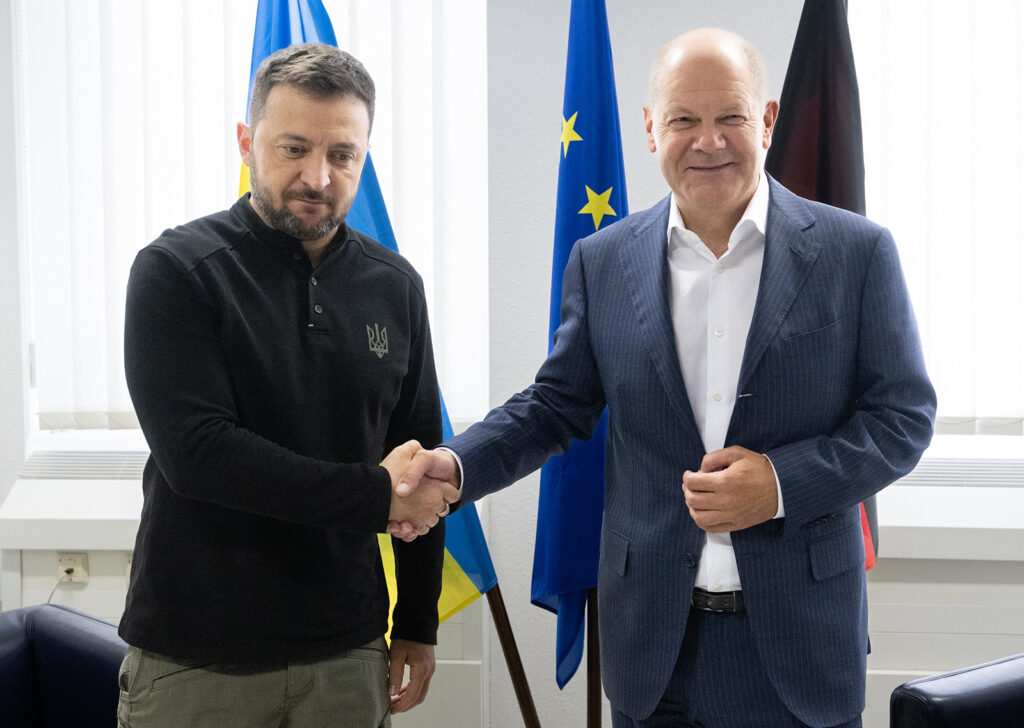Ukraine’s daring offensive into Russia’s Kursk region impressed Kyiv’s allies with its quick initial success, upending perceptions the war had settled into a stalemate and exposing the hollowness of Vladimir Putin’s vows to defend his territory at all costs.
But a month into the operation, U.S. and European officials still question what Kyiv’s endgame is for the 500 square miles (1,300 square kilometers) of Russian territory it says its forces now occupy. Some allied officials fear Kyiv could be forced to give up that land within a few months if Moscow mounts a larger counterattack.

With Russian forces pressing an offensive of their own in Ukraine’s east, using superior numbers to crack Kyiv’s lines, some European officials expressed concern that the cost of the Kursk operation may prove high. They spoke on condition of anonymity to discuss private deliberations.
Ukraine kept its allies in the dark about its plans for the operation, the largest incursion suffered by Moscow since World War II. The lightning campaign has revealed the weakness of Russian defenses, challenging the view that Putin’s two-year-old invasion had become a grinding war of attrition played to the Kremlin’s advantages.
The lack of a major Russian retaliation has also bolstered Kyiv’s argument that Putin’s oft-touted ‘red lines’ are empty threats aimed at scaring the U.S. and Europe. President Volodymyr Zelenskyy is citing the muted Kremlin response as he pushes allies to allow Ukraine to use longer-range weapons on targets inside Russia and take the pressure off his outnumbered forces. Privately, some allied diplomats now agree the fears about Putin’s retaliation appear overblown.
“Putin has shed so much blood that his ‘red lines’ are meaningless now,” Zelenskyy told allied officials at a meeting in Germany on Friday. He repeated appeals to be allowed to use Western long-range weapons to hit targets inside Russia “so that Russia is motivated to seek peace.”
He’s said Kyiv could use the territory it’s taken as a bargaining chip in talks. But with no sign from Moscow that it is ready to negotiate in earnest, some allies worry that Ukraine may not be able to hold it long enough to provide leverage in any diplomatic efforts.
Moscow so far hasn’t redeployed large numbers of troops from the east of Ukraine to fight in Kursk, instead continuing a deadly push against Kyiv’s lines around key logistics hubs. Allied officials said Russia would need to send many more troops to Kursk in order to eject Ukraine’s forces.
At the same time, the Kursk incursion aims to create a buffer zone that helps protect other Ukrainian cities from Russian attacks, according to Zelenskyy.
Ukraine’s move is a strategic success, according to Ann Marie Dailey, a policy researcher on Russia and military issues at Rand in Washington.
“This is a small incursion in one region but if Ukraine wanted to, it could do this again in a different part,” Dailey said. “They’re forcing Russia to reassess how it defends its entire border with Ukraine.”
Publicly, Western officials have been tight-lipped about the operation, not wanting to appear to encourage a move that may yet precipitate Russian escalation.
“The Kremlin’s army of aggression is now on the defensive on its own turf,” U.S. Defense Secretary Lloyd Austin said Friday alongside Zelenskyy.
But there is little sign allies are ready to grant Zelenskyy’s appeals to use longer-range weapons against targets in Russia. “I don’t believe one capability is going to be decisive and I stand by that comment,” Austin said after the meeting, noting that Ukraine has “a pretty significant capability of its own” for long-range strikes.
Still, the incursion has shown allies that Ukraine’s forces can execute the kind of coordinated offensives using a range of Western-provided weapons that U.S. and European officials have long encouraged.
“Kursk is a great example of Ukraine’s innovative approach to the military operations,” said Krzysztof Nolbert, Poland’s senior defense attache in Washington. “After an initial messy response, Russia will likely push back, the question is how long it will take to do so,” he said, noting that maintaining supply lines will be more difficult for Ukraine once winter sets in.
For Zelenskyy, facing growing fatigue at home as the war grinds through its third year and rising concerns that allied support may flag, as well, the Kursk operation was a risky gambit to gain leverage in talks, according to a senior European official.
Zelenskyy said last month he hopes to present a new peace plan to U.S. President Joe Biden soon. Western diplomats say the Kremlin is likely waiting for the outcome of the U.S. election in November before making any serious diplomatic moves, hoping that a Donald Trump administration might be less supportive of Kyiv.
So far, there is little evidence that Ukraine’s forces are building deep fortifications to defend the land they’ve captured, for instance by building trenches or laying mines and dragon’s teeth, according to Seth G. Jones, Director of the International Security Program at the Center for Strategic and International Studies in Washington.
“They’re not really preparing for large-scale, long-term defense,” he said, adding it could be part of Kyiv’s calculation to be able to retreat quickly but also leave open the option to continue advancing forward and take more territory.
Kyiv’s risky bet comes as it has complained about delays in promised weapons deliveries from allies and doubts grow about prospects for a $50 billion aid package. Russia has focused its most capable forces on an offensive around Pokrovsk, a key logistical hub in Ukraine’s east, and has been advancing steadily.
Across Ukraine, months of Russian airstrikes on power plants and other energy infrastructure have triggered widespread rolling blackouts and fueled fears of a broader crisis this winter.
___
© 2024 Bloomberg L.P
Distributed by Tribune Content Agency, LLC.



